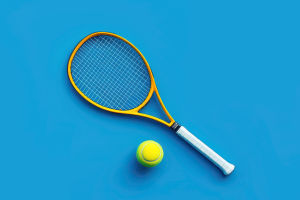Table tennis is a widely popular sport in the world.
The equipment behind it—table tennis rackets and table tennis balls—seems simple, but it contains many sophisticated designs and technical requirements.
The design of table tennis rackets and balls not only affects the rhythm and quality of the game but also has a direct impact on the skills of the players.
The development history of table tennis rackets and table tennis balls has also undergone many improvements and optimizations along with the development of table tennis.
Table tennis rackets are composed of three parts: baseboard, sponge, and rubber. The baseboard is usually made of wood, and some are mixed with a small amount of composite materials such as carbon fiber to enhance its hardness and elasticity.
The choice of baseboard determines the overall feel and hitting effect of the racket. Different wood and structure combinations can affect the speed, rotation, and control of the racket face.
For example, a racket with a five-layer wooden structure can provide better control and touch, while a racket with a carbon fiber layer is suitable for athletes who need a faster hitting speed.
Sponges are divided into thick and thin, soft and hard. Thick sponges are faster than thin sponges. Since everyone has different hand feelings, the choice of the hardness of the sponge depends on personal feelings.
Generally speaking, fewer people use sponges that are too hard, while young players are more suitable for using slightly softer sponges because this can improve the feeling of the hand when hitting the ball.
Rubber is one of the most important parts of the racket, which determines the friction and rotation effect of the racket on the ball. According to the type of rubber, table tennis rackets can be divided into different types such as positive rubber, reverse rubber, long rubber, and raw rubber.
Reverse rubber is the most common type. The surface of the rubber is flat and has a certain friction, which is suitable for controlling and creating rotation. The particles of positive rubber are outward, the friction is small, the hitting speed is fast, and it is suitable for fast attack.
Raw rubber, because of its special particle design, can reduce the impact of the racket on the rotation when the opponent creates a strong rotating ball, thereby changing the trajectory of the ball, which is suitable for defensive play.
The particles of long rubber are higher, which can create a special rotation effect, making it difficult for the opponent to predict the trajectory of the ball, thereby disrupting the opponent's rhythm.
Different types of rubbers are suitable for different playing styles, making the racket not only a tool for hitting the ball but also a "weapon" in the hands of athletes, which can help them show their technical characteristics.
As another key equipment in the game, table tennis balls seem simple, but in fact, they also have strict standards in manufacturing. The International Table Tennis Federation (ITTF) has clear regulations on the weight, diameter, and material of table tennis balls.
Modern table tennis balls are 40 mm in diameter and weigh 2.7 grams. They are usually made of polymer materials that ensure both the elasticity of the ball and its stability in the air.
The balance between the elasticity and weight of the table tennis ball determines the speed, rotation, and landing point control of the ball in the game.
In the game, athletes force the opponent to make mistakes by controlling the rotation, speed, and strength of the ball, and the display of these skills depends on the design and manufacture of the table tennis ball.
The rotation effect of table tennis balls is a highlight of the game. Athletes transfer power to the table tennis ball through the friction on the racket, creating various rotations.
There are topspin, backspin, side spin, etc. Topspin allows the ball to fall quickly in flight and speed up when it bounces, while backspin causes the ball to fall when it touches the table, making it difficult for the opponent to attack.
Side spin changes the trajectory of the ball through rotation, forcing the opponent to make misjudgments when receiving the ball. The change in rotation not only tests the athlete's technical level but also increases the viewing and confrontation of the game.
The design of table tennis rackets and table tennis balls is not only to provide a striking tool but also to help athletes show superb skills in the game.
Through the combination of different materials and different rubbers, the rackets can adapt to various styles of play, and the design of table tennis balls ensures the fairness and competitiveness of the game. Although table tennis seems simple, it contains great technical and technological innovations, making this sport both challenging and fun.


